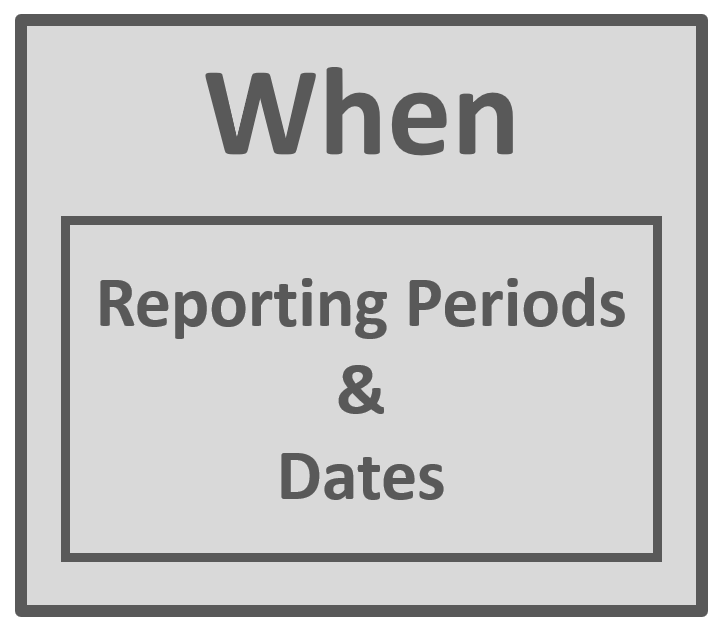DevResults is organized around the concept of a 'Project', and each Project is associated with who, what, when, and where:
- who does the work,
- what is being measured,
- when to report data, and
- where the work is done.

Note: If your organization uses a different term (such as activity, award, program, etc.) you can rename that term in the app instead.
Data model
Now let's take a more complex look at how those elements fit together:

Have a look at each component:
Who

Organizations: All projects have a primary managing organization. If NGO A wins an award to implement Project X, then Project X is the project and NGO A is its organization. Users are also assigned to an organization. See Projects and Organizations for more information on these topics.
Users: anyone who needs to access DevResults must be a user in the site identified by their email.
User groups: each user's permission level is set by the user group they belong to, such as owner, manager, contributor, partner manager, partner contributor, or viewer. The user group determines what a user can view and edit in the system. A partner user is restricted to only the projects assigned to them.
Permissions: a user group is made up of a set permissions that cover all parts of the site. Each permission can be set to view & edit, view, or no access. See Permissions Overview for further information.
What

Your results framework is a hierarchy of your objectives. Your indicators measure progress toward those objectives. All indicators must be assigned to at least one portion of your results framework(s).
Indicators must be precisely defined so that results can be compared between disaggregations, places, reporting periods, and projects. See our Indicator Guidebook for best practices and more information.
Indicator results might be reported for disaggregations like sex, age, training type, crop type, etc. All disaggregations have disaggregation categories. Disaggregation categories for sex would be male and female; for age they might be <18 and 18+.
Geographic disaggregations are a special kind of disaggregation. Every indicator must have a single geographic disaggregation, or reporting level, like country, region, or location (like a facility or village). This means that results will be entered per country, per region, etc.
When

There are two basic ways to report data in DevResults (see the Entering Results Data section of the site for more info on both of these):
- Via Reporting Period
- Your site is configured with reporting periods, which can be whatever periods you choose (quarterly, annually, etc.), which have set start and end dates and set submission periods.
- Users with limited permissions can only report data for the reporting period during its submission period.
- See Add a Reporting Period for steps on adding a reporting period to your site.
- Via Data Tables
- Data tables are like spreadsheets containing individual records, like training logs or attendance sheets.
- These rows of data must contain a date; the system will automatically aggregate these individual records by reporting period.
Where

DevResults tracks two types of geographies:
- Locations
- Specific points on a map with GPS coordinates such as hospitals, schools, etc.
- Locations can be added at any time by following the steps in the Add a Location page
- Administrative Divisions
- Shapes or areas such as districts, provinces, states, etc., are loaded into your site via KML file
- DevResults pre-loads your site with relevant shapes
- Changes to administrative divisions can generally only be made by providing us with a new KML file (see About KML Files and Add Map Overlays for more info)
Indicators must be defined with a geographic disaggregation.
Projects are assigned to the geographies where they report their indicators.
Projects
An project might be an award, grant, sub-partner, internal team, or any entity responsible for producing indicator results. A project is the combination of the organization managing the work, the list of indicators to be reported, the places where indicators are reported, and the reporting periods when indicators are reported. Consequently, most problems with being unable to enter data for a reporting period stem from problems assigning an indicator, a reporting period, or a geography to that project.
The best place to get started with projects is our page on how to add a project.
Didn't answer your question? Please email us at help@devresults.com.